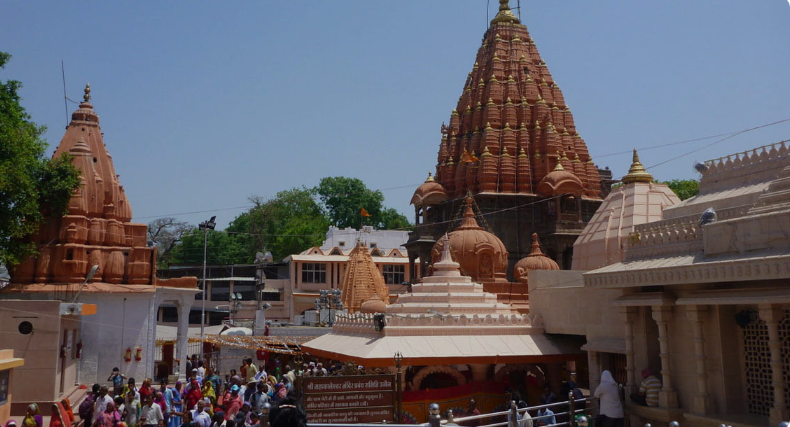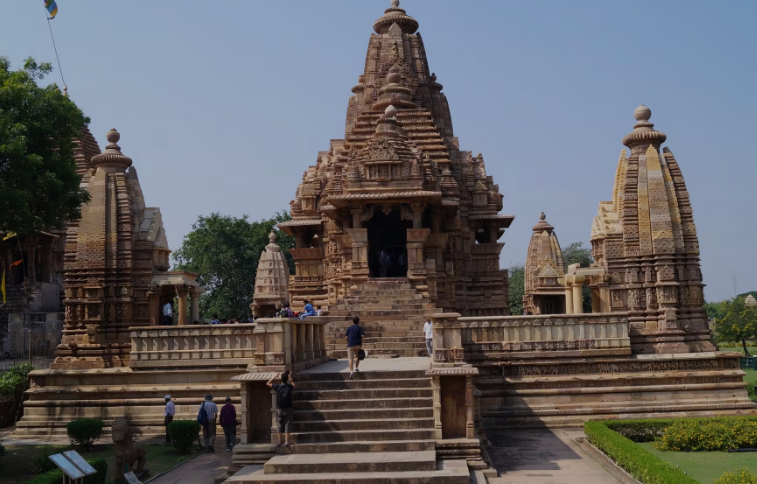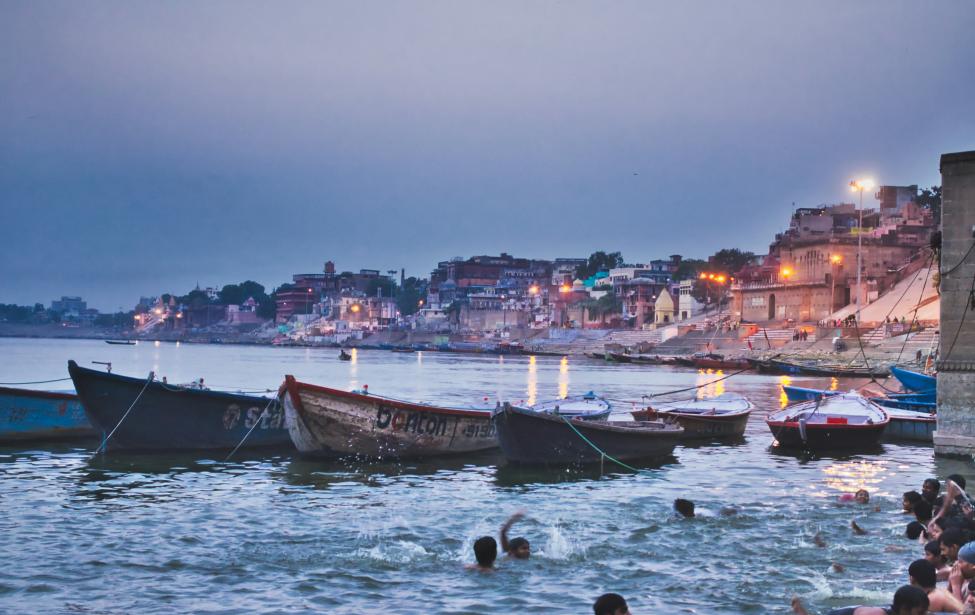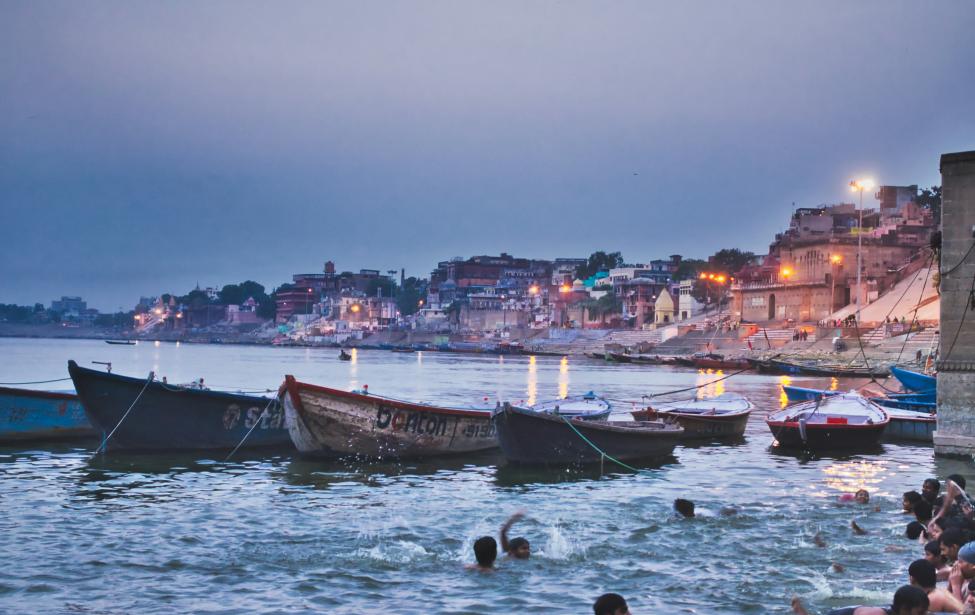





Destinations Cover
Delhi - Aurangabad - Ajanta - Trimbakeshwar - Nashik - Mandu - Omkareshwar - Ujjain - Bhopal - Khajuraho - Varanasi
Tour Overview
Explore Delhi's historic landmarks before flying to Aurangabad to visit the Ajanta and Ellora Caves.
Travel through sacred Jyotirlinga sites including Trimbakeshwar, Omkareshwar, and Ujjain, with stops at Mandu, Maheshwar, and Bhopal.
Continue to Khajuraho and Varanasi for temple visits, Ganges rituals, and end with a return flight to Delhi.
Day 1: Arrival at Delhi – Delhi Sightseeing
Arrive in Delhi, meet Monks and Monkeys Travels representative, and transfer to the hotel for rest.
After breakfast, enjoy an 08:30 AM city tour covering Red Fort, Jama Masjid, India Gate, Raj Ghat, Gurudwara Bangla Sahib, Birla Temple, and Akshardham Temple. Overnight stay at the hotel.
Day 2: Delhi – Aurangabad (By Flight)
After breakfast, transfer to the airport for your flight to Aurangabad.
On arrival, visit the magnificent Ellora Caves, featuring 34 rock-cut temples and monasteries from the 6th–10th centuries, including the renowned Kailasa Temple. Overnight stay at the hotel.
Day 3: Aurangabad – Ajanta – Aurangabad (110 Kms – 2.5 hrs)
After breakfast at 08:00 hrs, begin your excursion to the Ajanta Caves, renowned for their ancient Buddhist murals and sculptures from the 2nd century BCE to 6th century CE. Later, visit Bibi Ka Maqbara, the "Taj of the Deccan," a 17th-century mausoleum echoing the grandeur of the Taj Mahal.
Overnight stay at the hotel.
Day 4: Aurangabad – Trimbakeshwar – Nashik (220 Kms – 4.5Hrs)
After breakfast at 08:00 hrs, visit the sacred Trimbakeshwar Jyotirlinga Temple, known for its unique three-faced Lingam representing Brahma, Vishnu, and Shiva. Then drive to Nashik to explore the historic Kalaram Temple and the legendary Sita Gufa, linked to the Ramayana. Later, check in to your hotel for an overnight stay.
Day 5: Nashik - Mandu (360 Kms - 7Hrs)
After breakfast at 08:00 hrs, check out and proceed to Mandu. Visit Jahaz Mahal, the ship-like palace built between two lakes, and Hindola Mahal, known for its sloping, swinging walls. Later, check in to your hotel for an overnight stay.
Day 6: Mandu – Maheshwar – Omkareshwar (110 Kms – 3Hrs)
After breakfast at 08:00 hrs, visit the Maheshwar Temple, known for its stunning architecture and association with Maharani Ahilyabai Holkar. Later, drive to Omkareshwar to visit the sacred Jyotirlinga Temple on the Om-shaped Mandhata Island, surrounded by serene river views. After the visit, proceed to the hotel and check in for an overnight stay.
Day 7: Omkareshwar – Ujjain (145 Kms – 4Hrs)
After breakfast at 08:00 hrs, proceed to Ujjain, one of the seven sacred Moksha-puris and a key pilgrimage site. Visit the revered Mahakaleshwar Temple, home to a self-manifested Shiva Lingam and built in the Nagara style of architecture. Later, return to the hotel for an overnight stay.
Day 8: Ujjain – Bhopal (191 kms – 04Hrs)
After breakfast at 08:00 hrs, explore Bhopal, the "City of Lakes," and visit the Bhojeshwar Temple, famed for its massive 11th-century Shiva Lingam. Continue to the Bhimbetka Caves to see prehistoric rock paintings dating back up to 30,000 years, offering a glimpse into early human life. Return to Bhopal for a boat ride at Bada Talab, then check in to the hotel for an overnight stay.
Day 9: Bhopal – Khajuraho (By Train)
Early morning, drive to the railway station to board your train to Khajuraho, famed for its exquisite temple architecture.
On arrival, check in to the hotel, rest, and later visit the Khajuraho Group of Monuments, including Kandariya Mahadev, Lakshmana, and Vishvanatha Temples. These temples are renowned for their intricate carvings that depict themes of spirituality, mythology, and human life. Overnight at hotel.
Day 10: Khajuraho – Varanasi (397 Kms – 8.5 Hrs)
After breakfast at 08:00 hrs, drive to Varanasi, one of the world’s oldest and most sacred cities, with a history spanning over 3,000 years.
Known as the spiritual capital of India, Varanasi is deeply rooted in Hindu traditions and ancient scriptures like the Rigveda.
Arrive and check in at the hotel. Overnight stay at hotel.
Day 11: Varanasi Sightseeing
Early morning boat ride on the Ganges to witness sunrise and spiritual rituals at the ghats, followed by breakfast at the hotel.
Visit Banaras Hindu University, Bharat Mata Mandir, and Sarnath, where Buddha gave his first sermon. In the evening, experience the captivating Ganga Aarti ceremony at the ghats. Overnight stay at hotel.
Day 12: Varanasi – Delhi (By Flight) / Train
Varansi Airport Depat.
****Tour Ends with Sweet Memories****
Inclusions / Exclusions
Cost Include: -
- Meet & Greet services by our Guest Experience Executive at Airport
- Accommodation on DBL ROOM BASIS above mentioned hotels/ similar hotels.
- Packages are on a MAP (Breakfast And Dinner ) basis.
- Transfer Sightseeing by using an Exclusive Chauffeur driven 01 Innova/xylo ( itinerary point to point basis (not on disposal)
Cost Does Not Include: -
- Government GST of 5%
- Cost for Airfare, Train fare, rafting, medial urgency, insurance, additional meal / tea snacks.
- Cost of personal nature expenses such as bottled water, laundry, incidentals, porter, tips etc.
- Difference in cost arising due to extra usage of additional services, changes in taxes by Government or political unrest, natural calamities (Land slide/ road blockage) etc. in such case extra will have to be paid on the spot by guest.
- Cost for anything which is not mentioned under “COST INCLUDES” Colum.











































